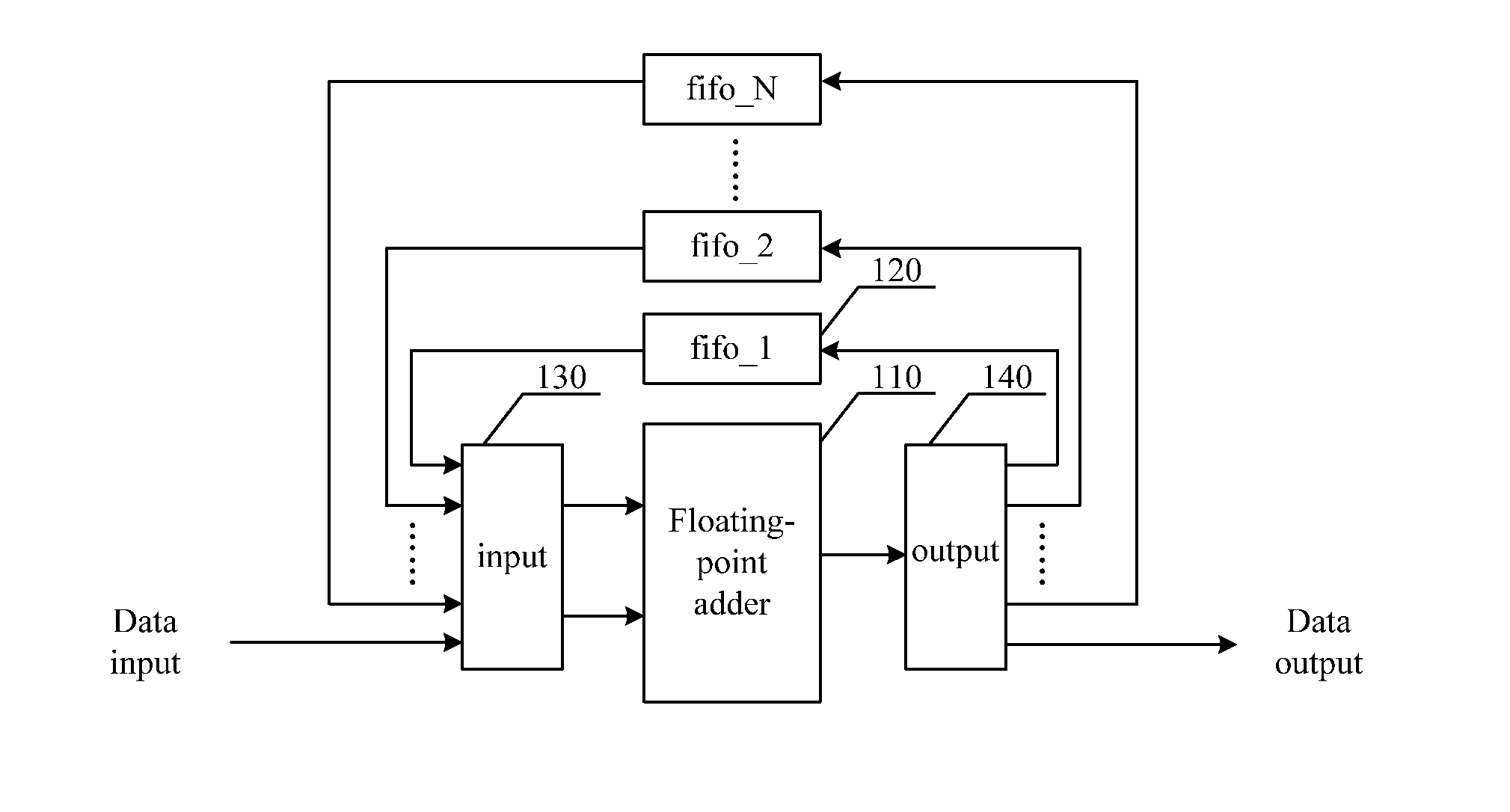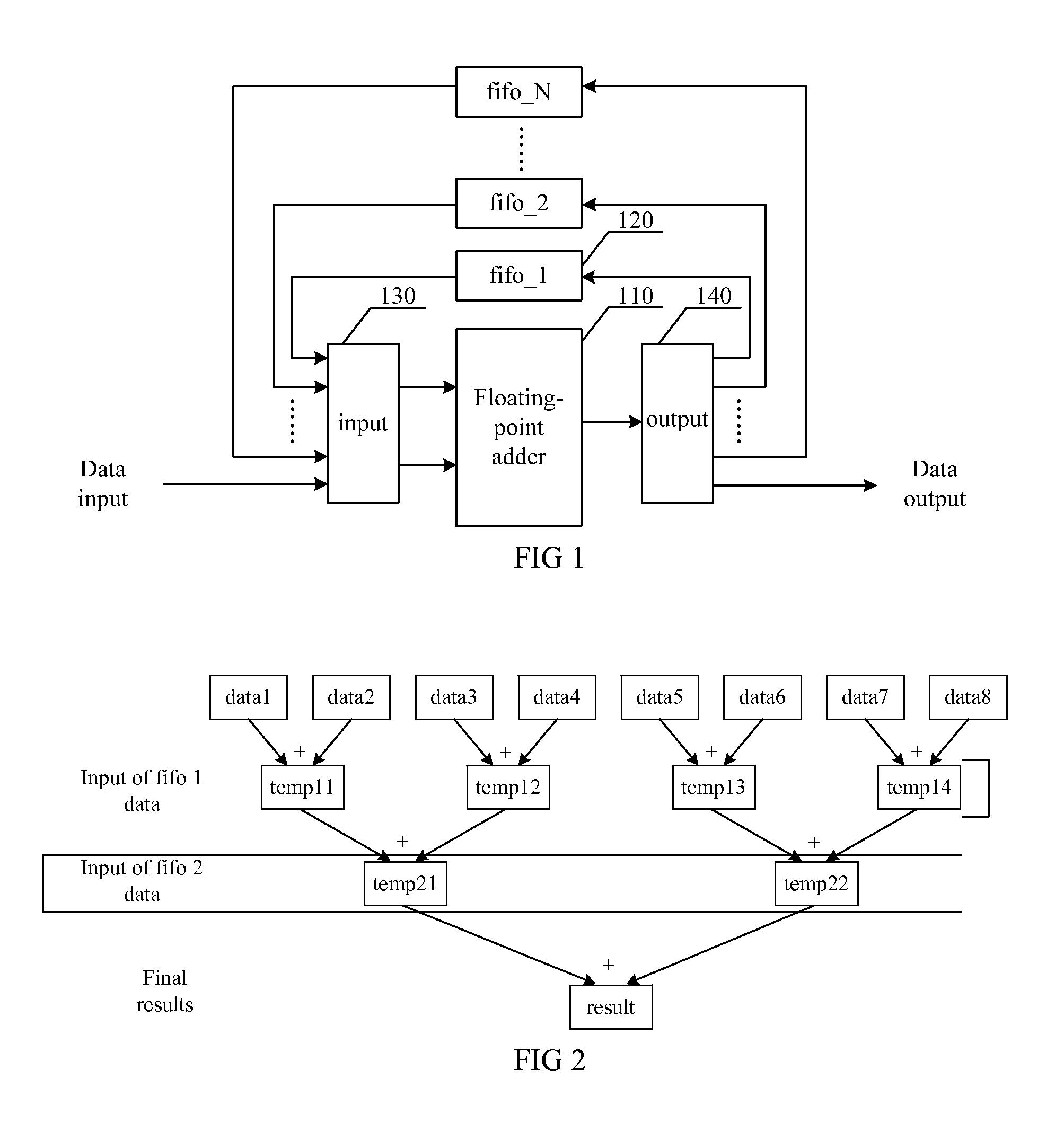FPGA-based high-speed low-latency floating point accumulator and implementation method therefor
a floating point accumulator and low-latency technology, applied in the field of fpga technology and high-performance arithmetic, can solve the problems of high latency to the output of floating-point adding, affecting the calculation performance of the system, and unlikely to obtain higher calculation performance, so as to improve the utilization efficiency of internal floating-point adder units and reduce the consumption of internal logic resources. , the effect of low latency to outpu
- Summary
- Abstract
- Description
- Claims
- Application Information
AI Technical Summary
Benefits of technology
Problems solved by technology
Method used
Image
Examples
Embodiment Construction
[0022]Detailed description of this invention in combination with preferred embodiments and drawings is stated as follows; however, this invention is not limited to this aspect.
[0023]A FPGA based high-speed low-latency floating-point accumulator as shown in FIG. 1, particularly comprising:
[0024]A floating-point adder unit 110 used for adding operation of input floating points; the floating points include original data, intermediate data on accumulated calculation of floating points at each level and latency of flag bit of input floating points in synchronization with adding of corresponding floating points; the floating-point adder unit 110 comprises a conventional floating-point adding module and a synchronous latency logic module for flag bits, which can be implemented with the help of internal logic resources of FPGA or configurable DSP module; to obtain higher arithmetic speed, floating-point adder unit 110 is normally implemented in the form of multilevel flow line.
[0025]N inter...
PUM
 Login to View More
Login to View More Abstract
Description
Claims
Application Information
 Login to View More
Login to View More - R&D
- Intellectual Property
- Life Sciences
- Materials
- Tech Scout
- Unparalleled Data Quality
- Higher Quality Content
- 60% Fewer Hallucinations
Browse by: Latest US Patents, China's latest patents, Technical Efficacy Thesaurus, Application Domain, Technology Topic, Popular Technical Reports.
© 2025 PatSnap. All rights reserved.Legal|Privacy policy|Modern Slavery Act Transparency Statement|Sitemap|About US| Contact US: help@patsnap.com


